In the world of polymer materials, TPE (Thermoplastic Elastomer) stands out as a versatile and highly adaptable material. As someone who has been deeply involved in the polymer industry for many years, I’ve witnessed the evolution and widespread application of TPE. Today, I want to delve into the topic of which materials TPE can be blended with for injection molding, exploring the possibilities, benefits, and challenges of these combinations.

Understanding TPE and Its Properties
Before diving into the blending options, it’s essential to understand what TPE is and its unique properties. TPE is a class of copolymers or a physical mix of polymers (usually a plastic and a rubber) that exhibit both thermoplastic and elastomeric characteristics. This means they can be processed like thermoplastics (melted and reshaped) while maintaining the elasticity and flexibility of rubbers.
TPEs are known for their:
Good elasticity and resilience
Excellent weather resistance
Low-temperature flexibility
Good chemical resistance
Ease of processing
Recyclability
These properties make TPE an attractive choice for a wide range of applications, from automotive parts to medical devices, consumer goods, and more.
Common Materials for Blending with TPE
Now, let’s explore some of the common materials that TPE can be blended with for injection molding, along with their respective benefits and considerations.
1. Polypropylene (PP)
Blending Rationale:
Polypropylene is a widely used thermoplastic known for its good chemical resistance, low density, and high melting point. Blending TPE with PP can enhance the flexibility and impact resistance of PP while maintaining its processability.
Applications:
Automotive components: Such as dashboard trim, door seals, and airbag covers.
Consumer goods: Like toothbrush handles, kitchen utensils, and toys.
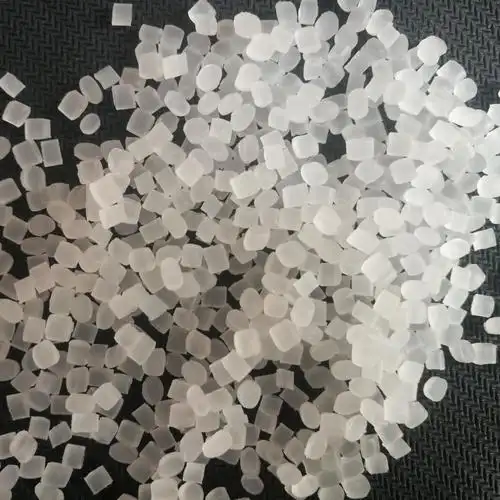
Considerations:
The compatibility between TPE and PP needs to be carefully considered to ensure good adhesion and mechanical properties.
Additives or compatibilizers may be required to improve the blend’s performance.
Performance Comparison Table (Simplified):
| Property | Pure PP | Pure TPE | PP/TPE Blend |
|---|---|---|---|
| Flexibility | Low | High | Medium |
| Impact resistance | Medium | High | Improved |
| Chemical resistance | Good | Good | Good |
| Processing temp. | High | Medium | Adjustable |
2. Polyethylene (PE)
Blending Rationale:
Polyethylene, particularly LDPE (Low-Density Polyethylene) and HDPE (High-Density Polyethylene), offers good chemical resistance, flexibility, and low cost. Blending TPE with PE can create a material with a balance of stiffness and flexibility, suitable for various applications.
Applications:
Packaging materials: Such as films, bags, and containers.
Construction materials: Like pipes, fittings, and gaskets.
Considerations:
The choice of PE type (LDPE, HDPE) will affect the blend’s properties.
Similar to PP blends, compatibilizers may be necessary to enhance adhesion and mechanical performance.

Performance Comparison Table (Simplified):
| Property | Pure PE | Pure TPE | PE/TPE Blend |
|---|---|---|---|
| Flexibility | Medium | High | Adjustable |
| Stiffness | High | Low | Medium |
| Chemical resistance | Excellent | Good | Good |
| Cost | Low | Medium | Adjustable |
3. Acrylonitrile Butadiene Styrene (ABS)
Blending Rationale:
ABS is a rigid thermoplastic known for its good impact resistance, dimensional stability, and surface finish. Blending TPE with ABS can create a material with improved toughness and flexibility, making it suitable for applications requiring both strength and resilience.
Applications:
Electronic enclosures: Such as computer cases, mobile phone shells, and TV bezels.
Automotive parts: Like instrument panels, interior trim, and exterior components.
Considerations:
The blending ratio and processing conditions need to be optimized to achieve the desired balance of properties.
ABS/TPE blends may require special attention during injection molding to avoid issues like warpage or poor surface finish.
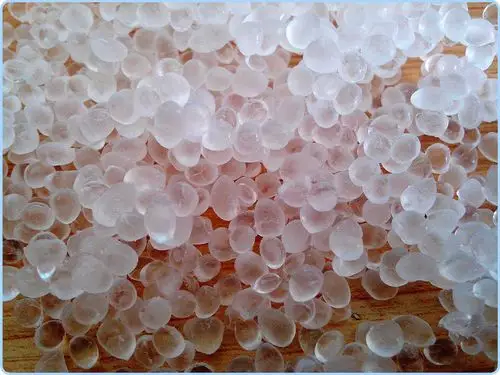
Performance Comparison Table (Simplified):
| Property | Pure ABS | Pure TPE | ABS/TPE Blend |
|---|---|---|---|
| Impact resistance | Medium | High | Improved |
| Stiffness | High | Low | Reduced |
| Surface finish | Excellent | Good | Good |
| Thermal stability | Good | Medium | Adjustable |
4. Polystyrene (PS)
Blending Rationale:
Polystyrene is a rigid, transparent thermoplastic with good dimensional stability and electrical properties. Blending TPE with PS can enhance the flexibility and impact resistance of PS, making it suitable for applications where a balance of rigidity and resilience is required.
Applications:
Consumer electronics: Such as remote controls, keyboard keys, and audio equipment.
Packaging: Like clear containers, trays, and blisters.
Considerations:
PS/TPE blends may exhibit reduced transparency compared to pure PS.
The blending process needs to be carefully controlled to avoid phase separation or poor adhesion.

Performance Comparison Table (Simplified):
| Property | Pure PS | Pure TPE | PS/TPE Blend |
|---|---|---|---|
| Transparency | High | Low | Reduced |
| Flexibility | Low | High | Improved |
| Impact resistance | Low | High | Increased |
| Electrical properties | Good | Medium | Adjustable |
5. Thermoplastic Polyurethane (TPU)
Blending Rationale:
While TPU is itself a type of TPE, blending different types of TPU or TPU with other TPEs can create materials with unique properties. For example, blending a soft TPU with a harder TPE can result in a material with a gradient of hardness, suitable for applications requiring variable flexibility.
Applications:
Sporting goods: Such as shoe soles, grips, and protective gear.
Medical devices: Like catheters, tubing, and wearable devices.
Considerations:
The choice of TPU and TPE types will significantly affect the blend’s properties.
Blending ratios and processing conditions need to be optimized to achieve the desired performance.
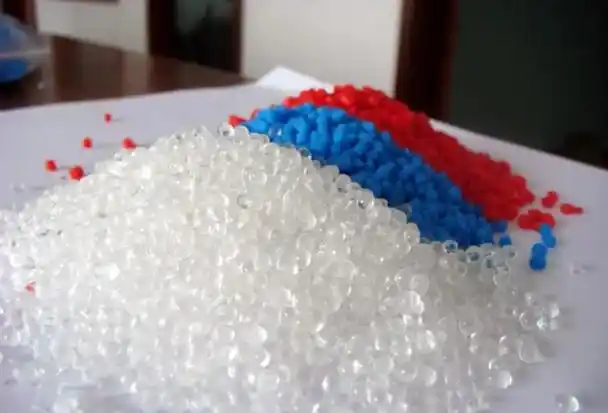
Performance Comparison Table (Simplified) (Note: This is a simplified comparison between two types of TPEs):
| Property | Soft TPU | Hard TPE | TPU/TPE Blend |
|---|---|---|---|
| Hardness | Low | High | Adjustable |
| Flexibility | High | Low | Variable |
| Abrasion resistance | Good | Excellent | Improved |
| Oil resistance | Good | Excellent | Good |
Challenges and Solutions in TPE Blending
While blending TPE with other materials offers numerous benefits, it also presents several challenges that need to be addressed:
1. Compatibility Issues
Challenge:
Different polymers may have poor compatibility with each other, leading to phase separation, poor adhesion, and reduced mechanical properties.
Solution:
Use compatibilizers: These are additives that can improve the adhesion between different polymers by forming chemical bonds or physical interactions at the interface.
Modify the polymer structure: Through copolymerization or grafting, the polymer structure can be altered to enhance compatibility.
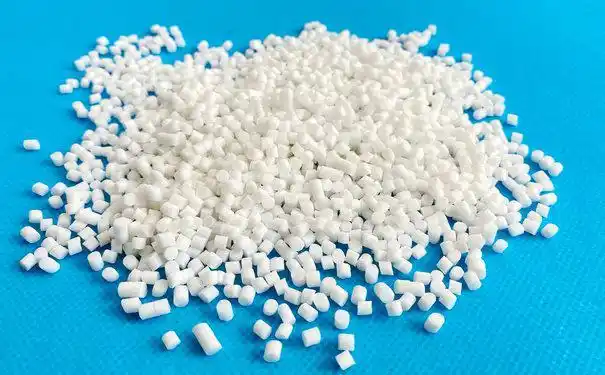
2. Processing Difficulties
Challenge:
Blending different materials may require adjustments to the processing conditions, such as temperature, pressure, and screw design, to ensure uniform mixing and good flow properties.
Solution:
Optimize processing parameters: Conduct trials to determine the optimal processing conditions for the specific blend.
Use specialized equipment: Such as twin-screw extruders, which can provide better mixing and dispersion of the components.
3. Performance Variability
Challenge:
The performance of the blend may vary depending on the blending ratio, processing conditions, and the quality of the raw materials.
Solution:
Standardize the blending process: Develop clear procedures and specifications for the blending process to ensure consistency.
Conduct thorough testing: Perform mechanical, thermal, and chemical tests on the blend to verify its performance and make adjustments as needed.
Future Trends in TPE Blending
As the demand for high-performance, sustainable, and cost-effective materials continues to grow, the blending of TPE with other materials is expected to evolve in several directions:
1. Development of New Blends
Researchers and manufacturers are constantly exploring new combinations of materials to create blends with unique properties. For example, blending TPE with biodegradable polymers could lead to the development of environmentally friendly materials.
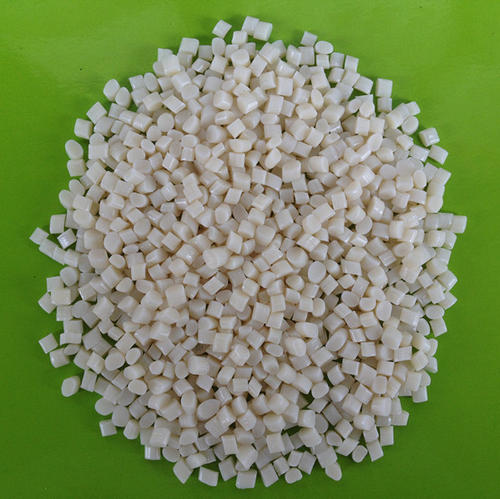
2. Improved Compatibilization Techniques
Advances in compatibilization techniques will enable the creation of more stable and high-performance blends. This could involve the development of new compatibilizers or the use of nanotechnology to enhance interfacial adhesion.
3. Sustainable and Recyclable Blends
With increasing emphasis on sustainability, there is a growing interest in developing blends that are not only high-performance but also recyclable and biodegradable. This could involve the use of recycled materials or the development of new polymers that are easier to recycle.
Conclusion
TPE’s versatility and adaptability make it an excellent candidate for blending with a wide range of materials for injection molding. Whether it’s enhancing the flexibility of PP, improving the impact resistance of ABS, or creating materials with unique properties through TPU/TPE blends, the possibilities are endless. However, to achieve the desired performance and consistency, it’s essential to carefully consider the blending ratio, processing conditions, and the use of compatibilizers or other additives.
As the polymer industry continues to evolve, I’m excited to see how TPE blending will contribute to the development of new, high-performance, and sustainable materials. Whether you’re a manufacturer looking to optimize your product’s performance or a researcher exploring new material combinations, TPE blending offers a wealth of opportunities waiting to be explored.

Related Questions and Answers
Q1: Can TPE be blended with natural rubber for injection molding?
A1: While TPE and natural rubber share some similarities in terms of elasticity, blending them for injection molding can be challenging due to differences in their chemical structures and processing requirements. However, with the use of appropriate compatibilizers and processing techniques, it is possible to create blends that combine the best properties of both materials.
Q2: What are the key factors to consider when blending TPE with other materials?
A2: Key factors to consider include the compatibility of the materials, the desired properties of the blend, the processing conditions, and the cost-effectiveness of the blend. It’s also important to consider the environmental impact and recyclability of the blend, especially in today’s sustainability-conscious market.
Q3: Are there any limitations to TPE blending?
A3: Yes, there are limitations to TPE blending. These include potential compatibility issues, processing difficulties, and performance variability. Additionally, the cost of the blend may be higher than that of the individual components, depending on the blending ratio and the use of additives or compatibilizers.
Q4: How can I ensure the quality of a TPE blend?
A4: To ensure the quality of a TPE blend, it’s essential to conduct thorough testing of the blend’s mechanical, thermal, and chemical properties. This can involve tensile testing, impact testing, thermal analysis, and chemical resistance testing. Additionally, standardizing the blending process and using high-quality raw materials can help ensure consistency and reliability.





